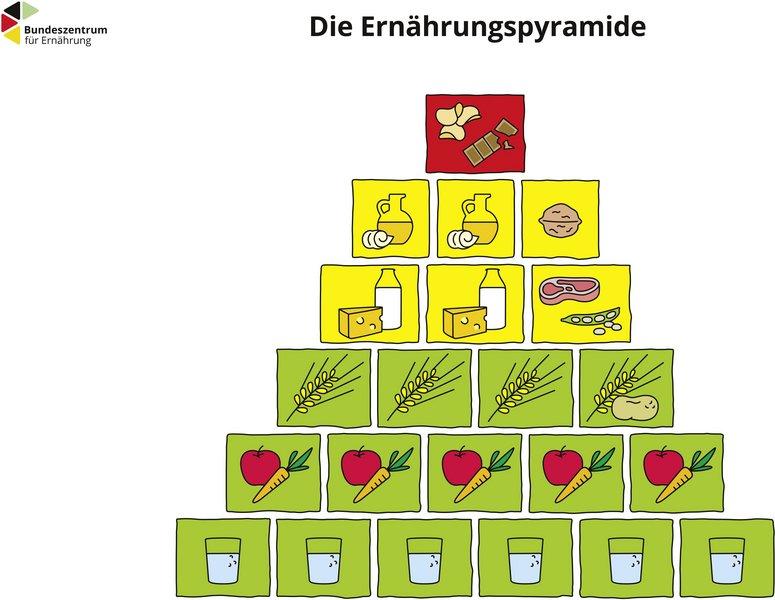
Food pyramid: For children and adults (c) BLE (Federal Office for Agriculture and Nutrition)
- Drinks
It is important to drink plenty of fluids because our bodies cannot store liquids. Water or unsweetened tea are best. You can drink water from the tap or from bottles. Children under the age of four and breastfeeding mothers should not drink fennel tea. This tea may contain a harmful substance (estragole).
Your child can drink from a mug, glass or cup.
Drinks such as iced tea, lemonade and juice contain a lot of sugar. Sugar is harmful to teeth and has a lot of calories. This can lead to obesity.
- Vegetables and fruit
Five servings of vegetables and fruit a day is healthy and goes well with every meal. Some children like vegetables and fruit raw, others prefer them cooked or fried. Cut them into bite-sized pieces, but not too small so your child doesn't choke. Many children love pieces they can grab and bite off themselves.
- Grains and potatoes
Grains make you feel full for a long time, especially wholegrains. Eat grains with your child several times a day. Grains can be found in various products: Bread, bread rolls, oatmeal, pasta, rice, … . Wholegrain products are the best choice. They contain many nutrients. Not a grain, but also popular: potatoes. These can be prepared in many different ways: boiled, fried or as mashed potatoes.
- Milk and dairy products
Milk and dairy products contain lots of protein and calcium. Calcium is important for strong bones and teeth. Dairy products include yoghurt, quark and cheese, for example. Your child should eat milk and dairy products twice a day. And preferably plain, without sugar or cocoa.







